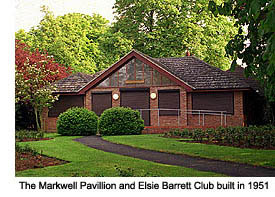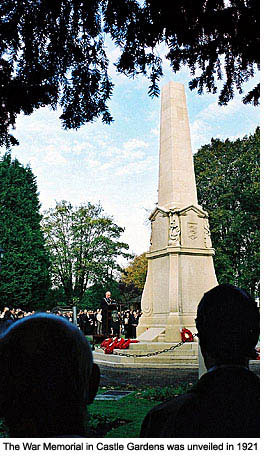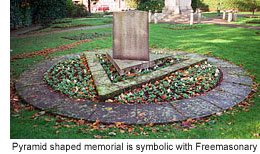|
 Also bordering the mound is the Markwell Pavilion and Elsie Barrett Club, given to the town by Frank Markwell in 1951 for use as a club for the elderly in memory of his wife, Elsie Barrett. One of Alfred Slapps Barrett’s three daughters, she later became the first woman Chairman of the Urban District Council. Also bordering the mound is the Markwell Pavilion and Elsie Barrett Club, given to the town by Frank Markwell in 1951 for use as a club for the elderly in memory of his wife, Elsie Barrett. One of Alfred Slapps Barrett’s three daughters, she later became the first woman Chairman of the Urban District Council.
Unfortunately, the pavilion never fulfilled its potential and with little use eventually fell into disrepair. Its saviour was the town council, who in the mid 1990s decided to refurbished the property and open it as an all purpose facility for use by all residents of the town.
In 1999 the Salvation Army was also given use of the pavilion after attendances at their Portland Road home dropped so dramatically they were forced to sell the property (See Guide 14). MORE PICTURES
|
|
 During the 19th century the castle mound and eight acres of surrounding land was owned by the Taylor family. In 1907 they decided to sell-up and instructed town auctioneers G E Sworders & Sons to handle the public auction. Before that happened, though, a specially created sub-committee had established that the owner, Mr F A Taylor, was willing to sell privately to the Urban District Council for £1,900. During the 19th century the castle mound and eight acres of surrounding land was owned by the Taylor family. In 1907 they decided to sell-up and instructed town auctioneers G E Sworders & Sons to handle the public auction. Before that happened, though, a specially created sub-committee had established that the owner, Mr F A Taylor, was willing to sell privately to the Urban District Council for £1,900.
Wasting no time the council immediately arranged sanction to pay the asking price and closed the deal. What went on behind the scenes leading up to this point isn't known, but council chaiman John L Glasscock is widely credited with obtaining this open space for the town.
The creation of Castle Gardens took place in 1907/08 when it was laid out with trees, flower beds, footpaths, fencing, bandstand and a shelter converted from an old cow shed. And as with all public spaces, bylaws were put in place: forbidding the public to beat their carpets or drive cattle through the gardens, or park perambulators on the flower beds.
Glasshouses once stood near to where the War Memorial now stands, used to produce flowers for these gardens, the cemetery gardens and for town occasions. The practise continued until the 1960s when the head gardener, Mr Forth, retired.
The War Memorial was unveiled on 3 April 1921 to commemorate the 207 men of the town who lost their lives in the First World War. It is said that the town of Bishop’s Stortford gave proportionally more of its manhood in that conflict than any other town in the Empire.
In May 1959, the advice of the Royal British Legion and the Imperial War Graves Commission was sought by Bishop's Stortford Council on the idea of having the names of those who died in the Second World War inscribed on the memorial. The surveyor was also investigating the possibility of either inserting plaques at each corner of the memorial surround or on the stone extension of the base of the memorial. As is now evident, the names of the 107 local men and women who gave their lives were engraved on the base of the memorial, but not until the early 1960s.
The county emblems of both Essex and Hertfordshire are represented on two of the memorial's sides, and each November on Remembrance Sunday a service is held here in memory of the fallen.
|
|
 Close by, but easily missed, a triangular shaped memorial sits within a circular stone-surround in the middle of a flowerbed. This stone commemorates men of the local Masonic Society who lost their lives in overseas conflicts between 1843 and 1927. The main inscription reads ‘Write us as one who loved his fellow men’ and is credited to William Smith. Close by, but easily missed, a triangular shaped memorial sits within a circular stone-surround in the middle of a flowerbed. This stone commemorates men of the local Masonic Society who lost their lives in overseas conflicts between 1843 and 1927. The main inscription reads ‘Write us as one who loved his fellow men’ and is credited to William Smith.
The privately owned bungalow adjacent to the War Memorial was originally built for Castle Garden's head groundsman and stands on the former site of the 17th century Cherry Tree Inn, itself built on the site of the medieval gaol. MORE PICTURES
|


